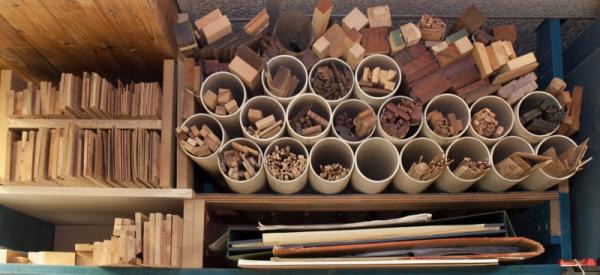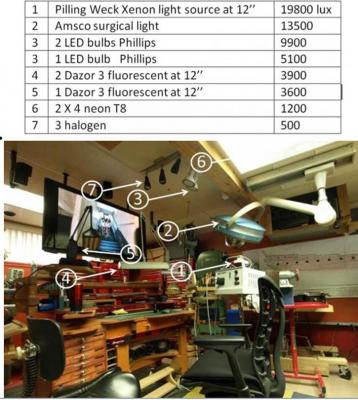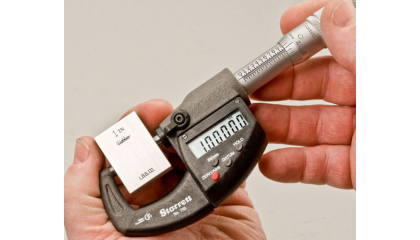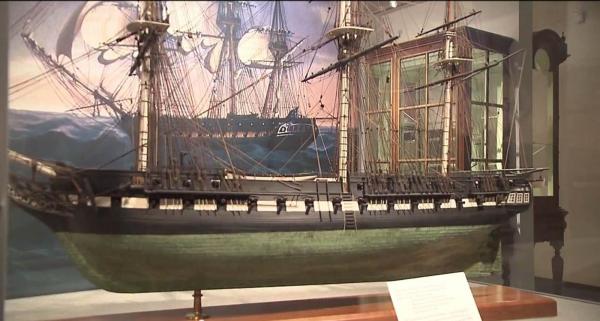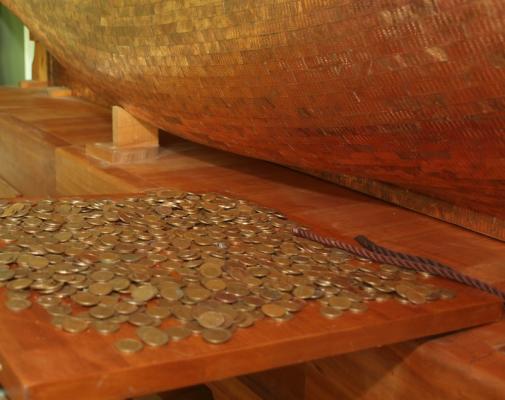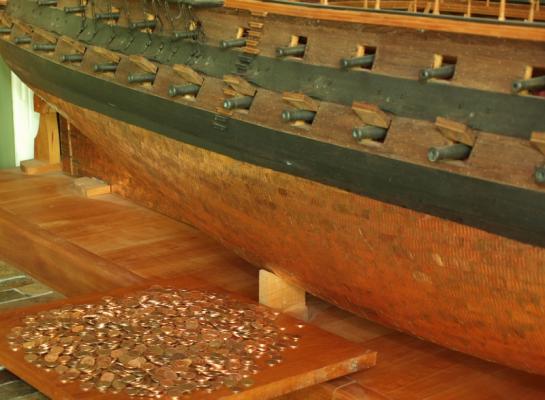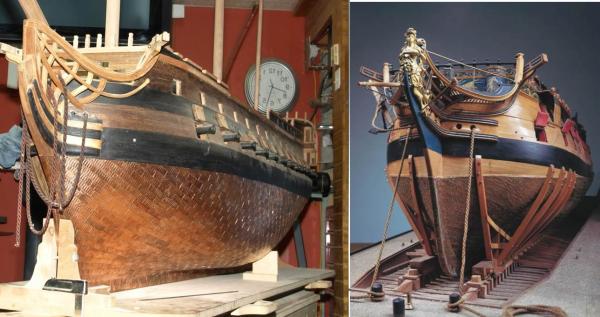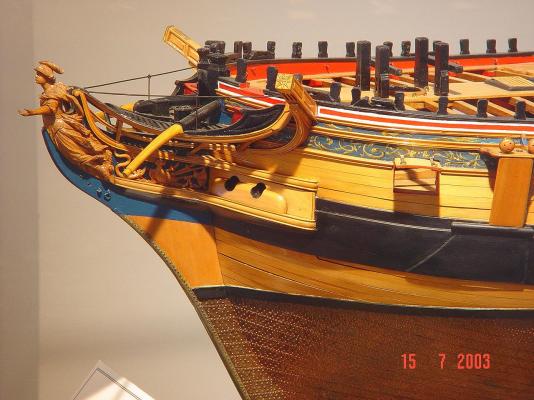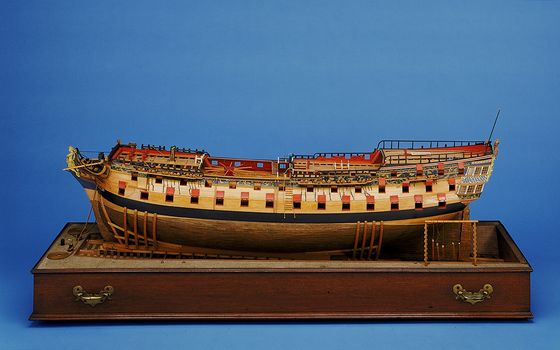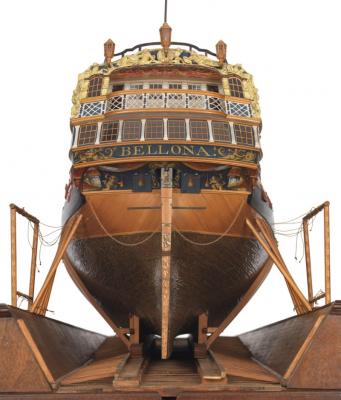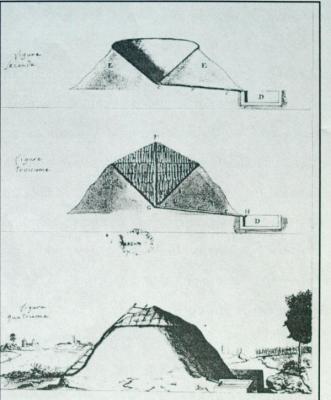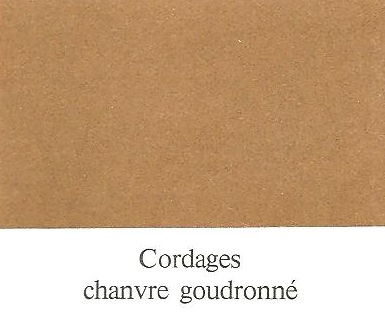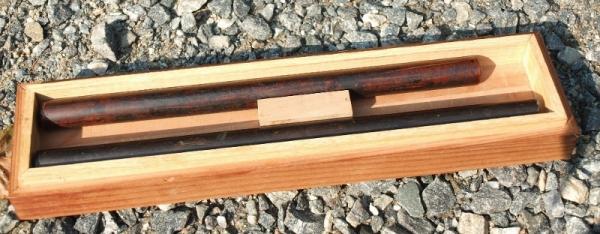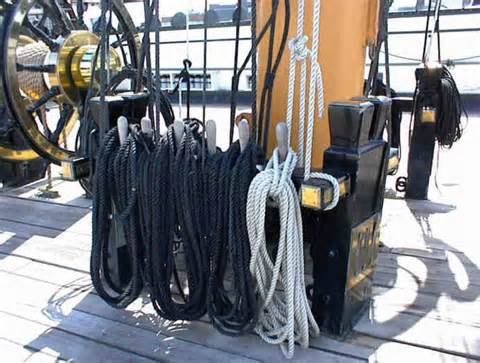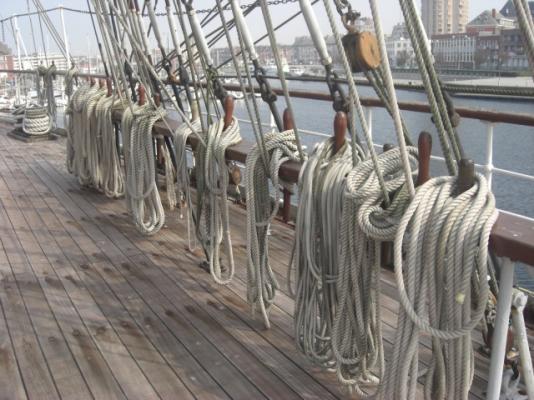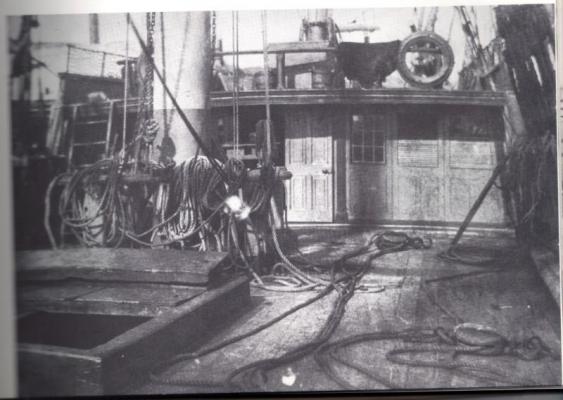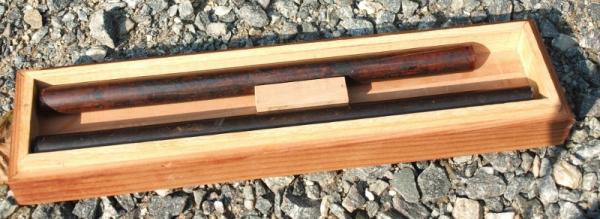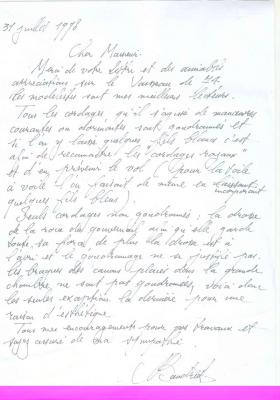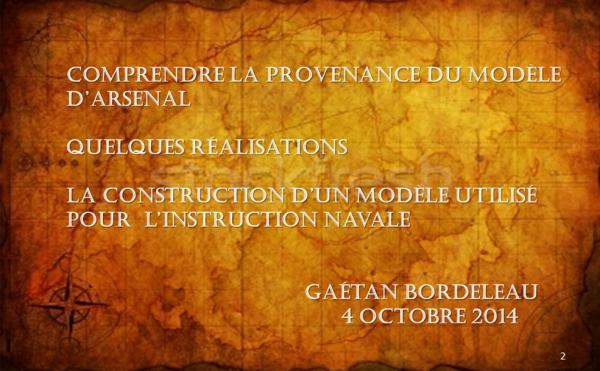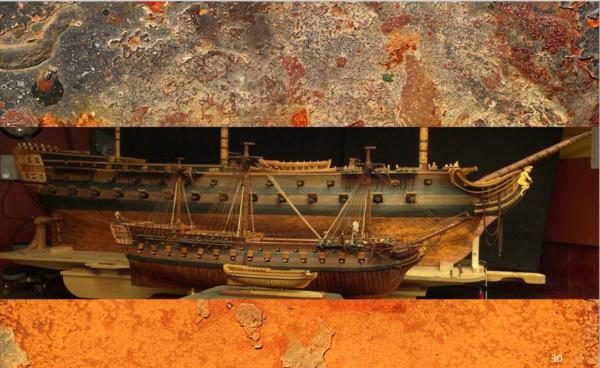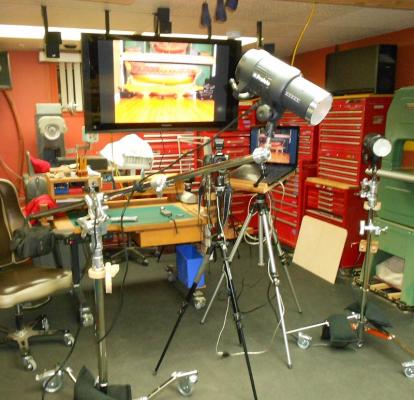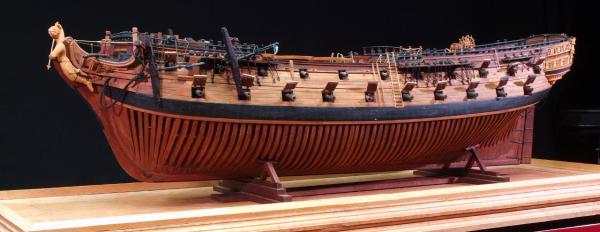-
Posts
1,307 -
Joined
-
Last visited
Content Type
Profiles
Forums
Gallery
Events
Everything posted by Gaetan Bordeleau
-
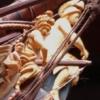
Strip storage
Gaetan Bordeleau replied to capt-j's topic in Building, Framing, Planking and plating a ships hull and deck
-

Proper light for a modelling table
Gaetan Bordeleau replied to Mike Y's topic in Modeling tools and Workshop Equipment
http://modelshipworld.com/index.php/topic/7570-work-table-light-needed/ in this topic we say that a good lamp has a price, but it is not everybody who are ready to buy. Everone has it's own priority. If I would have the choice to buy a good lamp at $400 or a lathe at the same price, I would buy the lamp first, simply because I will use the lamp everyday and for the lathe it will be only ounce every 6 months. Also a good lamp will save your eyes. So you have the choice you save your money or you save your eyes. Every one fix his own priority. Between a lathe and a milling machine, evrybody buy the lathe first, but the milling machine is more useful than a lathe and even more if it can be use at the same time as a press drill. http://modelshipworld.com/index.php/topic/5106-dentist-binocular-loupe/ this one is about dentist loupe, especially for very fine details if you do not have a good light, you will mist half the details http://modelshipworld.com/index.php/topic/7118-magnetic-task-light/ magnetic task light http://modelshipworld.com/index.php/topic/327-le-fleuron-by-g-bordeleau-scale-124/page-3 occasionnaly, I talked about it. -

Proper light for a modelling table
Gaetan Bordeleau replied to Mike Y's topic in Modeling tools and Workshop Equipment
The last time we talked about the subject... few weeks ago, about 10 lines lower, same chapter. Ideally, the discussion should continue in the same thread, but every time, it is a new thread! If you try to light 1 room with a 40 watts tungsten bulb at night, you will see, but may be you will mist some details; details disappear in the dark! -

Proper light for a modelling table
Gaetan Bordeleau replied to Mike Y's topic in Modeling tools and Workshop Equipment
This question keeps coming back. I compared many types. I saw one which had 40 times more lux than some cheap ones. This simply means, the more lux there is, the more details you will see. -

Copper plated ships in NMM
Gaetan Bordeleau replied to Gaetan Bordeleau's topic in Nautical/Naval History
Evan, you are right there is more than 1 possibilities to represent copper sheating. Variations in tone color of copper is for sure. A model can be represented with copper in 2 major representation. Freshly coppered, and with copper not altered by wheather and sea. The other representation would be a model who saw the outside wheather conditions. I think that we have an example of the Constitution in the video. I remember that few time ago did show pictures of a real ship copper plates, but I do not remember where the color where in green variations. Although I guess the model would have had more variations in the color, it is a very good representation. To obtain this green color, I do not remember chemically how to do it. I see 2 possible avenues. Add chemical products to copper to make it turn the good color. Or use a different material which chemically could reach the good color. For this reason or for supplying possibilities, we saw that some russians use brass. -

Copper plated ships in NMM
Gaetan Bordeleau replied to Gaetan Bordeleau's topic in Nautical/Naval History
Phil, you have a good idea 1- 2 stack of penny old and half new 2- comparison copper plates 3 years old with old penny 3- comparison copper plates 3 years old with half new penny Conclusion Ideally the color would be like Minerva picture... -

Copper plated ships in NMM
Gaetan Bordeleau replied to Gaetan Bordeleau's topic in Nautical/Naval History
For reasons I do not know there are apparently not many models with copper plates. Thank you Captain, contempory model, relatively new. Depending how the picture is taken the copper plates can look like red brown or simply brown picture 1. Thank you Druxey. I do not know the story of this model, but effectively copper plating is very well done on this model. As a first observation, it looks like that first effect of time would be to erase the shiny look of the copper picture 2. The look and specially the color of the figure head makr me think that this model is very hold. If the copper would be outside it would be a different story, green would be the first color for the wethered look. -
I am asking myself this question: Did somebody saw modelships in the NMM which are copper plated? The closest I can come to answer is by the pictures below. Images are not clear enough to tell the answer. Copper plating is probably dating after 1770, so Bellona could be? What would be the color of copper from a model after 200 years?
-
Geoff, here is how I see it, Tar has been used for centuries. Fabrication naturally has been improved and the process became more refined. Tar was black up to let’s say 1750. After that with a more refined distillation(photo 1), the color changed to dark brown with variations, because of time and provenance of fabrication, pine family, quantity applied, different recipes in different harbors where it was used and sun effect. Basically, it is as easy as this. The application changed a lot. In the 1600 period, ropes were immerged in a hot tar bath and then steamed. In 1700, every strand is tarred before to turn a cable. Variations in color are also known Jean Boudriot in the ship of 74 guns shows the color photo 2). He also says that the color varied up to a reddish brown (photo 3). Stockholm tar is the most refined quality tar produced. If we buy it today, it will be black, but it is surely not the 1780 recipe. The best tar came from Scandinavian forest. It is clear, fine and a bit red. Moscovy tar had a clear yellow color and darkens when cooked.
-
I saw that: Hello I work at the Swedish East India Man Gothenburg, all our standing and running rigging is made of hemp, therefore we use a lot of Stockholm tar to preserve the ropes, stays, shrouds ect... to prevent them from rot. Stockholm tar is quite thick and if you paint it on a rail served with rope it will just be thick layer of tar on the outside of the rope that does not impregnate extremly well and it more or less never dries. You want the tar to impregnate the rope thoroughly to prevent it from rot. What we do at Gothenburg is that we have a small electrical stove which we put a pot full of water on and then we put the pot with tar in in the water. We heat up the tar until it is not thick at all, like water (about 60 degrees celsius i think, for the tar). Then we paint the tar on the rope, since it is like water, you do not get a thick layer, instead it impregnates the rope and when it dries it forms a very thin black layer on the rope which is no problem to tuch and it will not be sticky. This black layer might not from the first time you tar the rope but the rope will not be sticky anyway once it has dried. The one thing that makes the tar dry best and fastest is the sun, if you use heated tar on a rope an leave it out in the sun it will dry in a few days, however it is important to paint thin layers if you want it to dry. Of course tar never completly dries but the sun makes it dry enough so that you can tuch it without getting dirty. All this is based on our experience with our ships rig and natural fiber ropes ropes. Concerning the smell, in my experience, if you tar a small rail with a thin layer of tar and it is outside, the smell will not take over and you will get use to it. Others who are not use to the smell will most likeley notice it but I do not think they will be bothered by it. Once again this is based on my experience, and I do walk around a ship daily that has all its rigging soaked in tar and therefore my sense of smelling the tar might be a bit "damaged". I hope this helps
-
Few words from; Traité de construction by Blaise Olivier, 1736, book I am using for the construction of Le Fleuron; this book is written as a dictionary: White ropes Ropes with no tar like the rope for the flags and the wheel rudder Tarred ropes Ropes passed in hot tar. All the ropes entering for the ship are tared excepted for the white ropes Tar Used in few harbors to coat the sculptures of ships. Ropes are passed in hot tar so they resists to water hot sun
-
-
We had the same talk in MSW 1.0 about the lanyard. ‘’Because lanyards are often adjusted, they were left untared’’. I respect this understanding, and I did read similar facts. I understand that nobody want to have tar on his hands. I also understand today’s practice with more resistant ropes. I cannot envision shrouds tar, ratlines and lanyards untared, the end of the lanyards and the ratlines wind around the shrouds. I think that cross-contamination also existed in that period. I find that strange that they would protect shrouds but not ratlines and lanyards. I do not think that salty waves saved more untared ropes. Here is how I see the color difference in standing and running rigging; this morning. A ship freshly coming out from the factory would have 1 color in the rigging. After few times at sea, moving rigging passing through the sheaves with high tensions caused by weights they lift surely had a faster abrasion rate and for this reason discolored faster. If I wanted to represent a model after few months at sea, I would use 1 color for fixed ropes and 1 shade lighter for the moving ropes.
-
-

Work Table Light needed
Gaetan Bordeleau replied to bear's topic in Modeling tools and Workshop Equipment
https://www.dazor.com/store/jewelry-lumilus-series.html I think that the best lamp available actually are led lamps like these -
-
Here is a letter from Jean Boudriot talking about this subject plus a translation from Google. All ropes are tared except the royal ropes. They would soon rot without it. Resistance rope is weaker than ropes "whites" (untared). The only ropes untared; the furling of the steering wheel so that it retains all its force. In addition, the furling line is safe and tarring is not justified. The bragues cannon placed in the great room are not tarred for aesthetic reasons. Formerly the ropes once committed by immersing them in a bath of hot tar.The tarred rope yarn before it is committed to faires ropes. I think that this would suggest that tarred yarn was applied more as a hot dyeing substance. Tar changed color depending time and provenance. I did read black, brown and brown-red.
-
How long would it take to salted water to eat a rope? Probably faster than non salted water!
-
Thank you Jo, but sometimes 24 hours is not enough in a day! Photography background in an existing picture When a photograph takes a picture, he is careful in the composition. If he is inside he will place the model in front of a photography background. I was looking different photography background and I thought how about associating a modelship in front on a background. Sometimes we try a white or a black background. In this particular case, I want to add a background after the picture was taken. I have powerpoint presentation that I will be using this autumn. Let’s try version 1.1. I added a black background in the slides when the picture is not filling the page 100%. I did a research, on Internet again; in this case the key words were paper texture in a first try and old paper texture in a second try. Many samples are needed in colors in the same group or complementary. Here are some examples of incorporating background to a picture already taken.
- 728 replies
-
- le fleuron
- 64 gun
-
(and 1 more)
Tagged with:
-
A new english vocabulary word for me tethering; access to the laptop through another device. After taking a picture, the camera displays it on a little screen about 2 by 3 inches. It is hard to clearly evaluate if the picture has the anticipated result we wants to have. For a long time I wished I could transfer pictures automatically from the camera directly to the laptop in a program called Lightroom where the image can be evaluated in full resolution on the PC monitor immediately after capture. The images can be stored directly on the computer’s hard drive, which means that there is no need to change the camera storage medium. One more time thanks to Internet, I found the solution. When I take a picture with my Olympus camera, the picture is automatically transferred in a file, through a program named Olympus studio. When Lightroom sees a picture in this file, it automatically transfers it in a file supported by Lightroom. Then the picture is automatically displayed on the laptop. If I want I also can see it on the tv monitor.
- 728 replies
-
- le fleuron
- 64 gun
-
(and 1 more)
Tagged with:
-
''The Dremel has too much wobble.'' This is exactly what happens when: ''One recommendation if going Dremel...get rid of the collets and get a micro chuck.'' This is exactly the same principle on a milling machine; if you put a milling cutter in a chuck after some times it will wobble and could cause an accident. Another example with the lathe, using a collet will hold your part way much stonger and way more precisely than a chuck.
-

Amati Tools
Gaetan Bordeleau replied to Vivian Galad's topic in Modeling tools and Workshop Equipment
Hi Vivian, As Amati have lots of tools for modelling, and has a name to zeal, should I trust their tools as quality ones? A quality tool is rarely made from plastic. I showed a variety of tools I use in this subject: http://modelshipworld.com/index.php?/topic/4386-tool-storage/ If I were you, I would look in the jewelery tools to begin -
Hi Chris, Hahn wrote ''ships of the american revolution and their models''. I chose the frigate: Roebuck of 44 cannons because he was explaining his building methods in this book, and it surely was helpful to get a direction to begin.
- 728 replies
-
- le fleuron
- 64 gun
-
(and 1 more)
Tagged with:
-
- 728 replies
-
- le fleuron
- 64 gun
-
(and 1 more)
Tagged with:
About us
Modelshipworld - Advancing Ship Modeling through Research
SSL Secured
Your security is important for us so this Website is SSL-Secured
NRG Mailing Address
Nautical Research Guild
237 South Lincoln Street
Westmont IL, 60559-1917
Model Ship World ® and the MSW logo are Registered Trademarks, and belong to the Nautical Research Guild (United States Patent and Trademark Office: No. 6,929,264 & No. 6,929,274, registered Dec. 20, 2022)
Helpful Links
About the NRG
If you enjoy building ship models that are historically accurate as well as beautiful, then The Nautical Research Guild (NRG) is just right for you.
The Guild is a non-profit educational organization whose mission is to “Advance Ship Modeling Through Research”. We provide support to our members in their efforts to raise the quality of their model ships.
The Nautical Research Guild has published our world-renowned quarterly magazine, The Nautical Research Journal, since 1955. The pages of the Journal are full of articles by accomplished ship modelers who show you how they create those exquisite details on their models, and by maritime historians who show you the correct details to build. The Journal is available in both print and digital editions. Go to the NRG web site (www.thenrg.org) to download a complimentary digital copy of the Journal. The NRG also publishes plan sets, books and compilations of back issues of the Journal and the former Ships in Scale and Model Ship Builder magazines.


